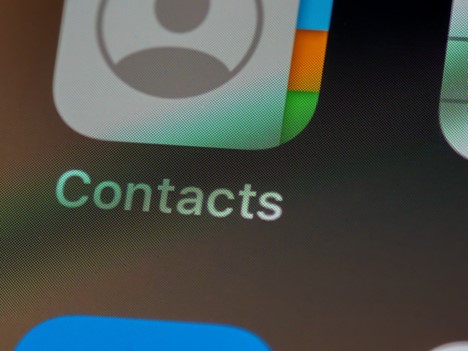
by Art Waskey | Jun 2, 2021 | Art of Sales Weekly
While the best networking result remains a referral from an existing client, the paths to that outcome have changed radically. To light up your contact base, you need to plug into new methods of soliciting business. The use of alternative wholesale channels, virtual selling, and digital marketing are just a few of the new ways of networking. These, combined with the pandemic limiting the all-important face-to-face connections, have left salespeople confused. How do you grow your contact base in today’s world?
Add Talent
To develop your business, consider adding channels and talents whose expertise can rapidly grow your contact base of customers.
- Social media manager – As with any critical business function, hire someone with experience to manage your social media accounts. A social media manager can increase brand awareness, drive traffic to your domain, and cultivate leads.
Through various platforms, my social media manager initiates contact with specific high-potential market clients. From his work, I average 15 new subscribers to my blog readers list per week. The growth in my network through this form of connecting is phenomenal.
- Marketing strategist – A marketing strategist identifies new market opportunities and consumer preferences for your products or services. This is done by implementing the best automated marketing software for your business.
My marketing strategist sets up distribution and presentation software that connects to my customer database. From this he generates weekly emails and monthly sales tips. He now is in the process of implementing video streaming so clients can access my training programs online.
Harvest Connections to Build that Contact Base
There are large pools of both social media managers and marketing specialists available around the country. These experts typically work with a number of clients, so their fractional cost to you is reasonable. Marketing and social media are important to your future success so choose wisely (see gearing-up-to-hire). With these contracted associates you can harvest qualified connections that will lead to new relationships and the growth of your contact base.
Get tips and tricks like the above in The Art of Sales books. Or subscribe to the FREE monthly articles here.

by Art Waskey | May 25, 2021 | Art of Sales Weekly, Featured
The pandemic has disrupted supply chains, resulting in shortages of goods and rapidly escalating material costs. Many suppliers have had to adjust their pricing policies. The owner of a successful distributorship recently sought my advice on how to deal with price fluctuations. Some of his largest durable goods suppliers were adding surcharges to all future deliveries. Other suppliers were changing their pricing policy to “priced upon delivery.” With no control over supplier cost policies, he wanted to know about the best pricing strategies for his business.
Pricing Strategies
While the pandemic is unique, I have witnessed similar periods of price instability in the past. My sales experience suggests you consider the following actions when dealing with price fluctuations in your markets.
- Make price increases timely – The media brings the rising cost of goods to everyone’s attention as they occur. Added costs also show up early in the grocery aisle, so your customers will be well aware of price increases. If your suppliers have initiated an increase, give your salespeople copies of suppliers’ letters to share with their customers. These will support your need to raise prices. Don’t get caught waiting. Adjust your prices as early as possible.
- Review contracts – Be sure your contracts include an escalation clause. These allow you to make price increases due to unforeseen circumstances. Most clauses will require you to provide proof of need to raise price when a situation occurs.
- Anticipate surcharges – Be aware that with rapid changes, most manufacturers will include a surcharge to recover their increased cost. This is especially true of products that are quoted with long manufacturing lead times.
- Price at time of delivery – Give the customer your best estimate cost but reserve the right to change it. Make the final price conditional to the cost you incur from your supplier. To protect his margins, I know a contractor who is quoting his projects with a surcharge for final adjustment when they are completed. When costs are changing rapidly, it’s wise to quote the final price at time of delivery.
Be Proactive
The strategies listed above are important to consider in these uncertain times. When confronted with a period of price fluctuation, be proactive.
Get tips and tricks like the above in The Art of Sales books. Or subscribe to the FREE monthly articles here.

by Art Waskey | May 18, 2021 | Art of Sales Weekly
Ambitious people are always looking for someone who can make them even better. Behind many successful people in history is a great mentor, a trusted advisor who has helped them along the way. Jennifer Merrill’s book, “Top 25 Mentoring Relationships in History” provides lots of evidence of this. Here are a few examples of great mentoring relationships to encourage you.
- Facebook CEO Mark Zuckerberg – Steve Jobs often met with Zuckerberg to discuss the best business and management practices for Facebook. When Jobs passed away in 2011, Zuckerberg posted on his Facebook page, “Steve, thank you for being a mentor and a friend. Thanks for showing that what you build can change the world. I will miss you.”
- Microsoft cofounder Bill Gates – Gates first met American business magnate Warren Buffett at a dinner organized by Gates’ mother. There he began a discussion with Buffett about business and philanthropy that has lasted for years. Gates has said he has turned to Buffett for advice on various subjects and often refers to him as “one of a kind.”
- Pepsi CEO Indra Nooyi – “If I hadn’t had mentors, I wouldn’t be here today. I’m a product of great mentoring, great coaching… Coaches or mentors are very important.”
- Actor and director Clint Eastwood – Now 90 and still directing, Eastwood was mentored by many including his grandmother who encouraged the Dirty Harry star to always work hard and pursue his dreams. “I’ve had many mentors in my life… my grandmother was always encouraging. She always thought I was going to be something when nobody else, including myself, thought I was going to amount to anything.”
A great mentor is suited to your personality, respectful of others, and a recognized expert in their field. Find someone who can show you that what you build can change the world.
Get tips and tricks like the above in The Art of Sales books. Or subscribe to the FREE monthly articles here.

by Art Waskey | May 11, 2021 | Art of Sales Weekly
A mentor can be a valuable guide to a successful career. The relationship is a personal one. To be effective, you need to choose a mentor carefully. Here are the qualities I suggest you look for.
Choose a Mentor
- Chemistry – The first consideration when looking for a mentor is personality fit. Do you have shared interests with this person? Do you communicate easily?
- Competency – Choose mentors who are the most qualified people you can find and invite them to pour their knowledge into you. Don’t worry about finding everything you need in one person. Currently, I have mentors in four areas of my life — professional, educational, spiritual, and physical.
- Humility – Choose a coach who is humble and willing to share his/her failures. Vulnerabilities provide valuable lessons and illustrate how new paths can be forged. The right mentor will want you to learn from his/her failures.
- Discernment – Look for specific characteristics when choosing a mentor. In Multipliers, Liz Wiseman offers this insight on discerning leaders: “The right counselor is considered to possess wisdom and be of good judgment; especially so concerning subject matter often overlooked by others.”
- Trust – People don’t share with someone they can’t trust. A good advisor understands that confidentiality is paramount in his role as a teacher and coach. Make sure this is clear.
- Mutual benefit – Helping others in a mentor relationship brings unexpected mutual benefits like joy and motivation. The late Zig Ziglar said: “You can get anything out of life if you just help enough others get what they want out of life.”
- Availability – Be flexible with your time. Work within your mentor’s schedule, not yours. Know the direction you hope to be taking, including your goals for the next twelve months. Have your questions ready.
The respected expert for you
The most successful people are always looking for someone who can make them even better. Choose a mentor who is enthusiastic, a good personality fit, considerate of others, and a respected expert in their field.
Get tips and tricks like the above in The Art of Sales books. Or subscribe to the FREE monthly articles here.

by Art Waskey | May 5, 2021 | Art of Sales Weekly
The sales rep felt dejected. He had demonstrated to a client the cost savings offered by changing to a new process. When he followed up on his proposal, he was told that the order had been placed online due to better pricing. The rep had failed to differentiate his proposal from the online offering.
Create a partnership
What would have made a difference in the above scenario? Wise customers realize and appreciate the value of partnerships with their key suppliers. Sales disruptors like Amazon, Grainger, Fastenal, etc., or the possibility of manufacturers going to direct sales, exist. I believe that the industrial gas and welding customer is still looking for local, strategic distributor partnerships, however.
Steps to take
Here are some steps you can take to create partnerships and differentiate yourself from the disrupters:
- Verify the decision-maker – Be sure you are dealing with the person who can approve the deal. Don’t make the assumption that your contact, no matter their influence on product or service selection, is the decision-maker. Spend time building relationships with the front office executive team.
- Ensure commitment – Before giving a solution to a problem or offering a cost savings idea, get a commitment to buy. Ask: “If I offer you a [specify the percentage] cost saving enhancement to your production line, can you guarantee I will get the order?” A written pre-commitment is best.
- Differentiate your services – Differentiate yourself from the online disruptor. Value-added services, like installation, engineering, and training, differentiate the distributor from the online seller or big box store. Separate the price of these added functions from the product or service you are selling. This prevents customers from buying online and expecting you to install or train them on the product.
- Offer other value added services – In addition to the above, consider offering these other value-added services: VMI (Vendor Managed Inventory), Kanban, consigned stocking, qualified service technicians, and product enhancements.
- Add fees – Value-added services add to your costs, but I find customers generally are willing to pay a premium for them. Some distributors have converted value-added services into revenue streams. Consider adding fees for services like transportation, acetylene cylinder inspection, cylinder maintenance, equipment installation, training, and engineering.
Make each sale count
Create partnerships and be sure your customer is aware of the added value associated with your products and services. Make each sale count by differentiating your proposition from that of the online or big box seller.
Get tips and tricks like the above in The Art of Sales books. Or subscribe to the FREE monthly articles here.

by Art Waskey | Apr 27, 2021 | Art of Sales Weekly
Finding the sweet spot
During my long career in sales and executive leadership, many have approached me with concerns over their career path. They were often uncertain about their current choice and searching for a job with greater meaning. Finding your sweet spot — that place of contentment — is not easy. It requires making it a habit to do certain things.
Ask questions
The journey to find your comfort zone starts by asking some critical questions:
- What do you do better than people around you?
- What do you do without effort?
- What do you do without being asked?
- What do you do readily without getting paid?
- What do you do that highly energizes you?
When you have answered these questions you are ready to develop new habits.
Three dimensions
In his book The 8th Habit, Stephen Covey explains that habits lie at the intersection of knowledge, attitude, and skill. As we develop these three dimensions, we increasingly become equal to new challenges and gain possibilities.
Knowledge –We must be life-long learners. Develop the habit of reading every day and choose topics that motivate you. For me it’s leadership, sales, and theology.
Attitude –When I meet someone who isn’t excited about his/her career, I ask them about their true passions. Recognize what you want to do with your life and make realignments accordingly by developing the right habits.
Skills – Work on honing the habits that foster your unique talents and tap into what motivates you. This will make a difference. Regardless of what you are doing now, practice the habit of sharpening the skill-set that gives you the greatest sense of accomplishment and reward.
Leave a legacy
Deep within each of us is an inner longing to live a life of greatness and contribution — to leave a legacy. Make a habit of striving for the knowledge to recognize your path, the courage to take it, and the talents that enable you to be all that you can be.
Get tips and tricks like the above in The Art of Sales books. Or subscribe to the FREE monthly articles here.






